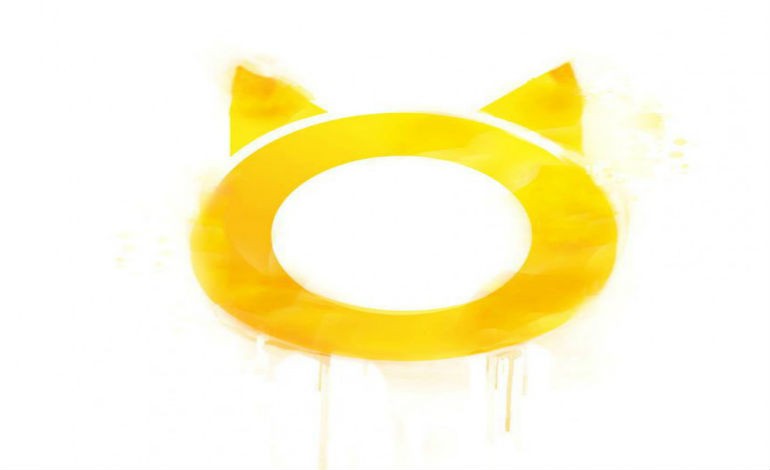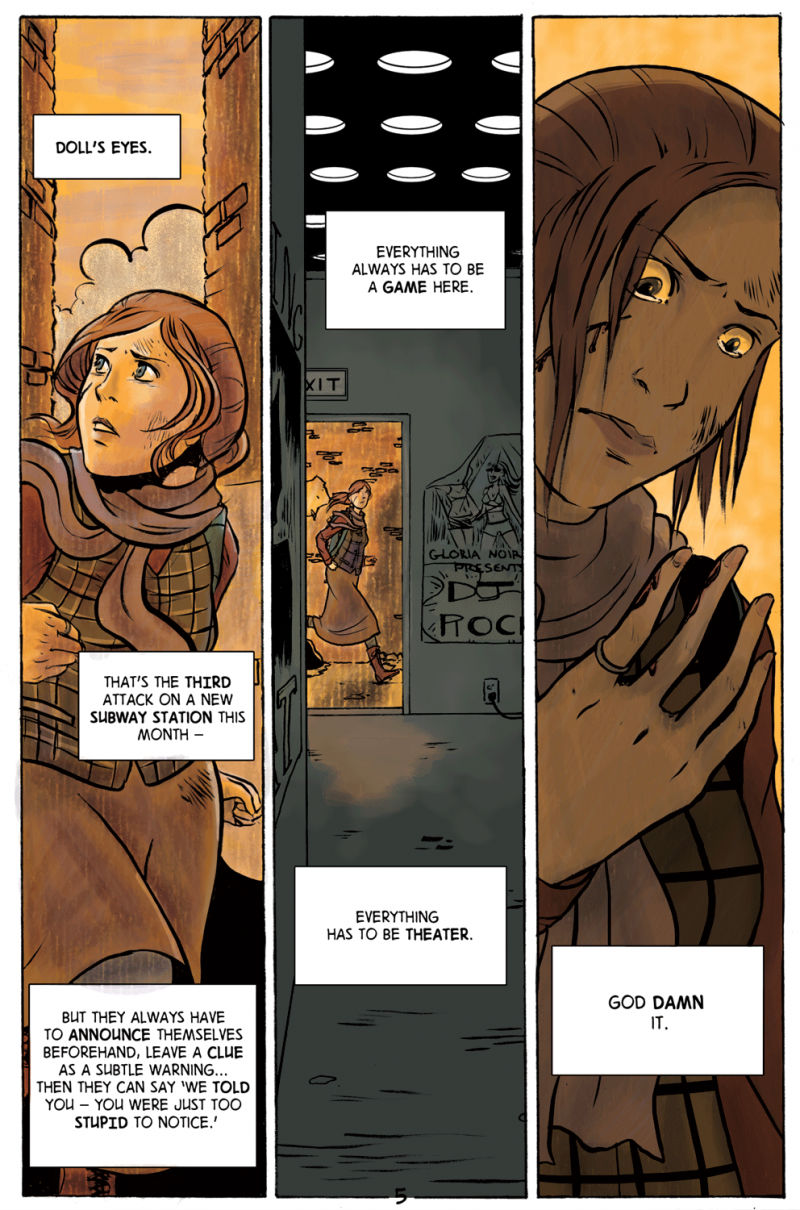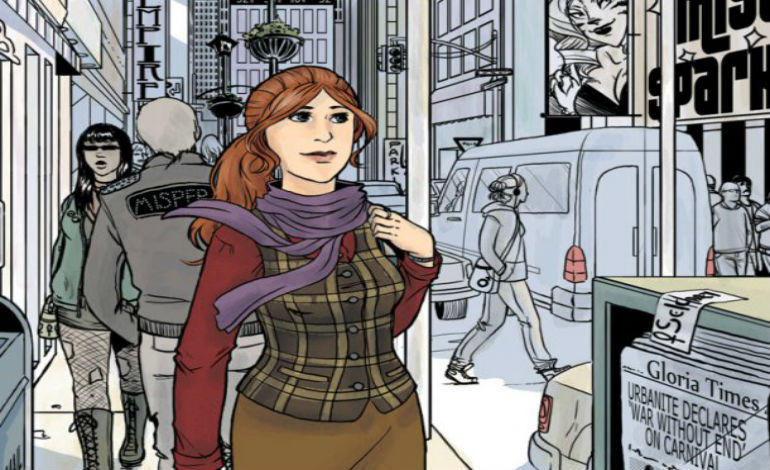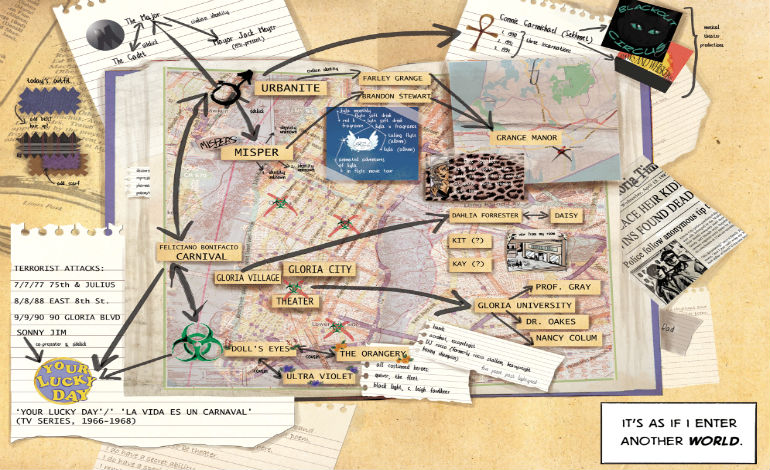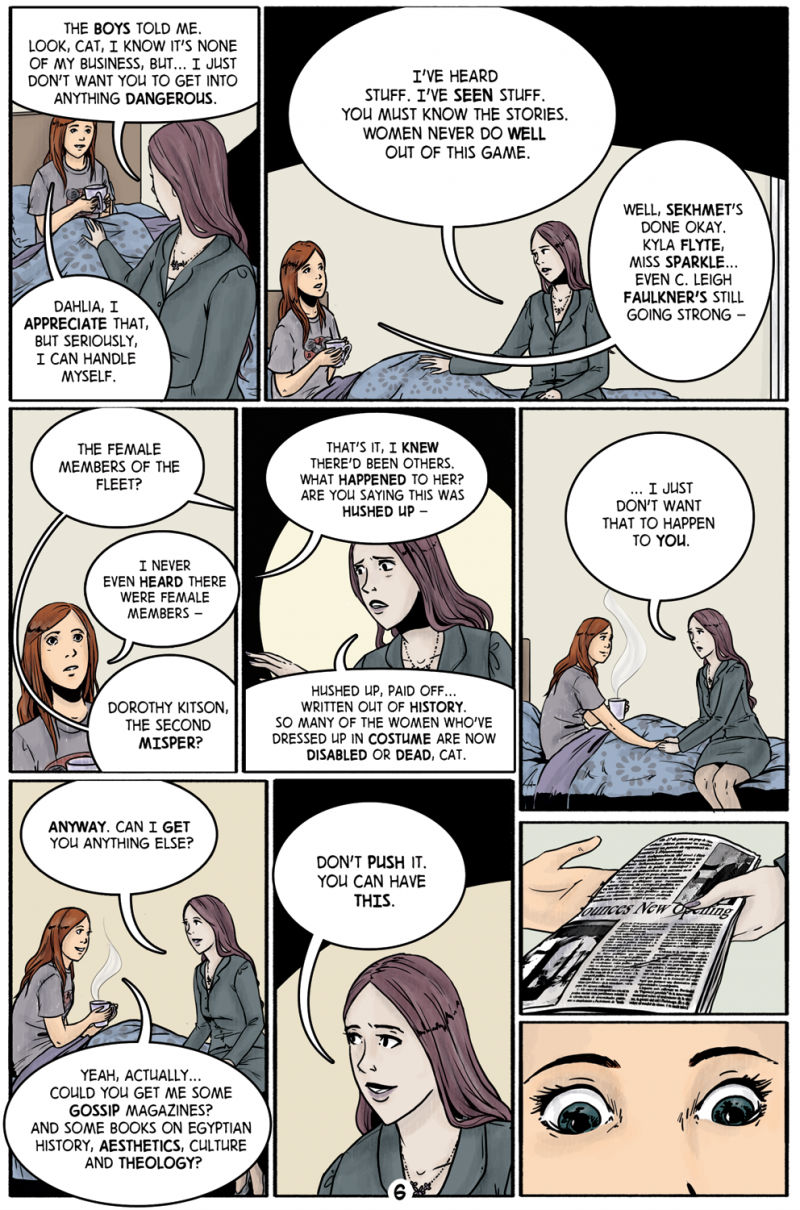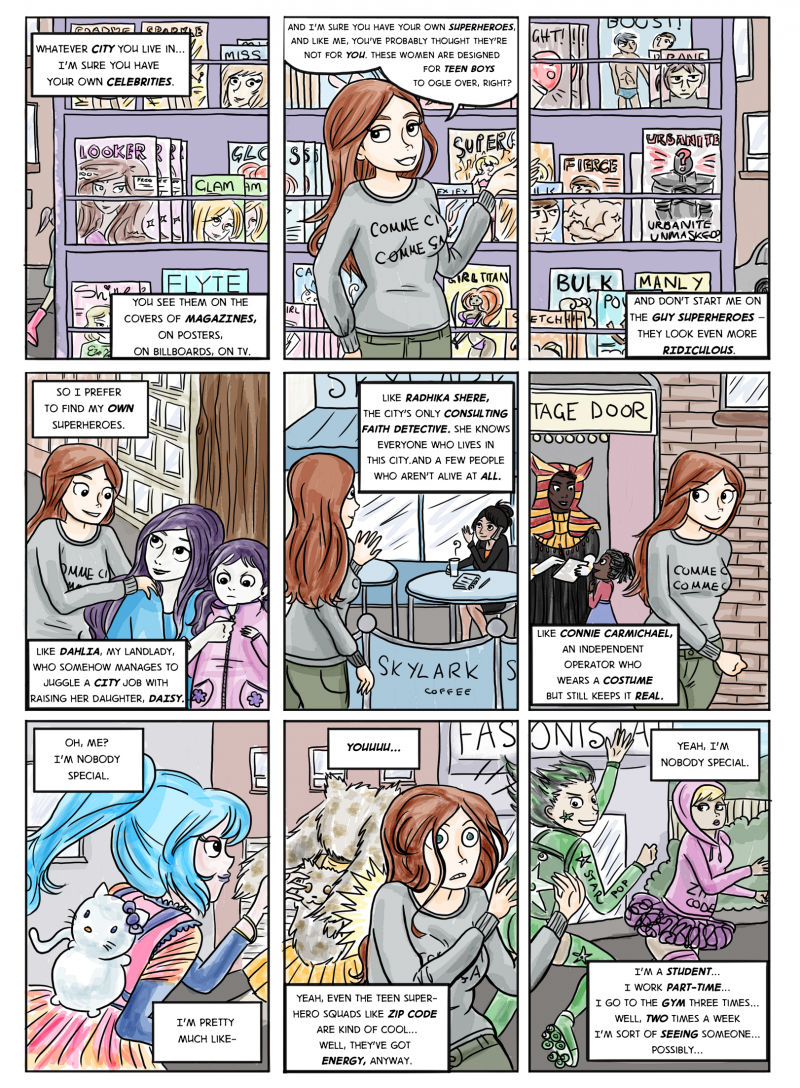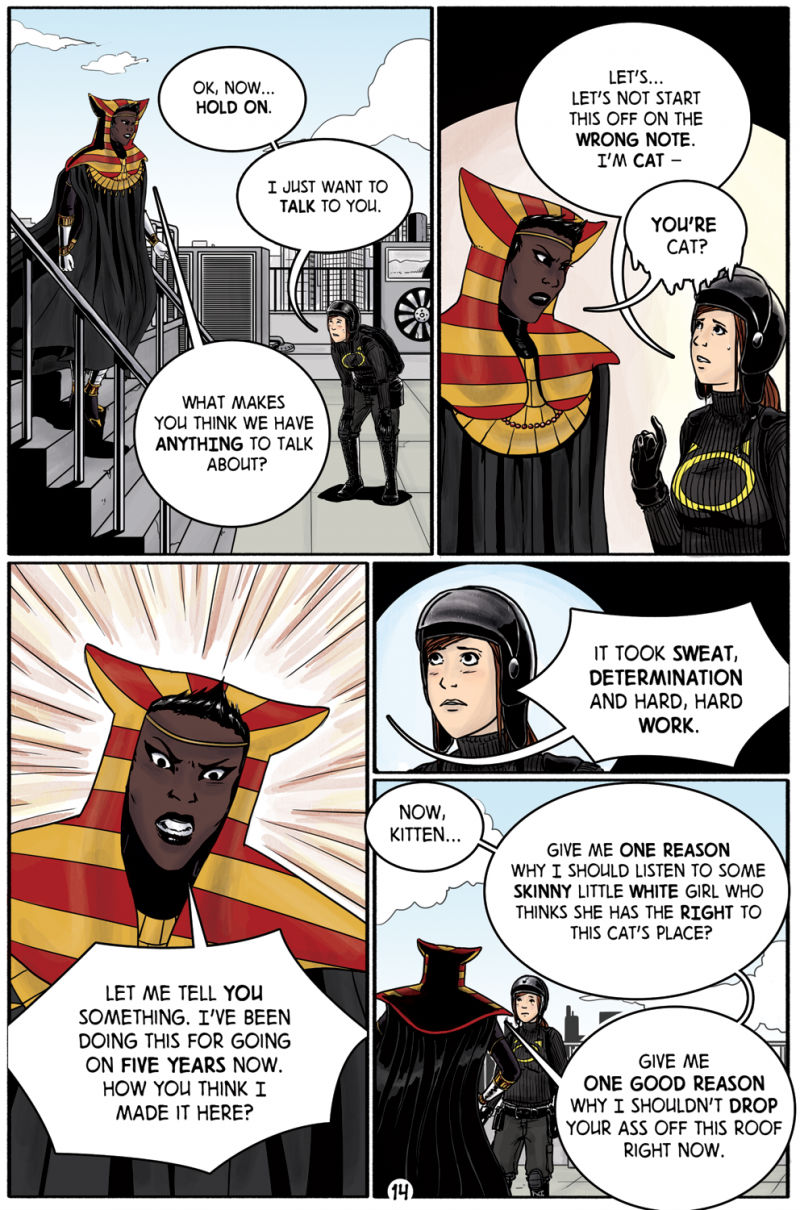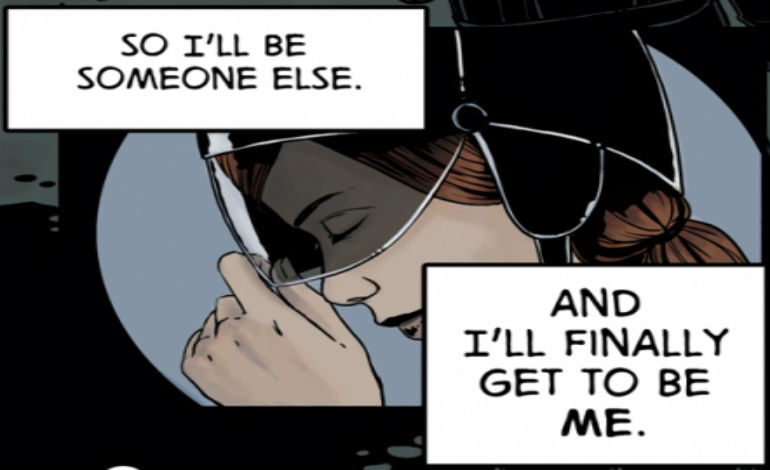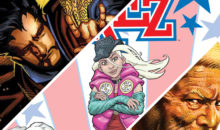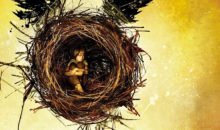A Review Of My So-Called Secret Identity Volume One
My So-Called Secret Identity has a captivating DIY feminist hero in the form of Cat. So many elements are happening behind the scenes: or "backstage." It deconstructs the super hero genre but maintains the humanity of the characters: even making you care about some of them as people and not just the capes and cowls. It is an elegant, understated brilliant concept and I want to see more of this story mapped out.
It’s been a few months since My So-Called Secret Identity‘s Kickstarter got funded and while the shipping of the physical Volume One has been delayed, backers have already received their digital copy. Now having my own copy and finally getting to read Issue #5 that resolves the story arc’s cliffhanger, I am going to review My So-Called Secret Identity.
My So-Called Secret Identity, a comic written by Will Brooker and drawn by Sarah Zaidan and Susan Shore, is a story that requires some attention to detail. It utilizes the aesthetics and tropes of the superhero genre and even possesses some characters that, on the surface, appear to be DC comics analogues.
The comic’s storyline takes place in Gloria City, perhaps an alternate version of New York City, where the Major and the seemingly super-powered Fleet fight to maintain order and security, while the black-garbed Urbanite and his side-kick Misper combat the twisted designs of Carnival. Meanwhile the feline Sekhmet steals items and Doll’s Eyes preys upon the hapless citizens of Gloria: leaving her signature flora calling cards.
But, as the protagonist Cat Abigail Daniels observes, it is all a front: all part of “the theater.”
The Major, who is also the Mayor of Gloria City — seemingly a combination of Superman and Captain America — maintains his power by fighting against the chaos of villainy with empty political slogans and promises. Urbanite is more extreme in some ways. As a parody of Batman’s vigilante justice, he terrorizes both citizens and criminals alike with contradictory rhetoric and ham-fisted violence: never understanding or never wanting to understand that he is just a tool in maintaining the political status quo set in Gloria between the Major and Carnival: the latter of whom seeming to be a wannabe worn-down Joker game show host. Kyla Flyte is a stereotypical blonde, beautiful, and sparkling superhero who seems to spend more time preening, conducting family business, and signing photographs than doing anything to help anyone.
And what’s truly awful is that in the midst of all the combat these heroes, villains, and anti-heroes it’s innocent civilians and properties that truly get caught in the crossfire. In the world that Will Brooker sets up for us, it seems as though both super-heroism and villainy are past times that belong to the rich and popular while very few ever care about the lives of those who they ruin in their play.
Of course, even this layer of “the theater” is not what it seems. Certainly it would be all too easy for Brooker to follow the examples of Alan Moore’s Watchmen and Garth Ennis’ The Boys: in showing us how superheroes would realistically not work.
Enter Cat.
Through Cat, a young literature and philosophy student who is tired of watching her city suffer, we see the fulfilment and promise of a different perspective. This is a woman who values her friendships, who calls people on their bullshit but who is perfectly capable of seeing the good and forgiving the bad. She isn’t particularly athletic, or rich, or possess any superhuman capabilities. But as Brooker and his team like to state:
Smart is a superpower.
It isn’t so much that Cat even has an eidetic memory. She actually does have to use memory aids to help her piece together names, events, backgrounds, and places in order to attempt to solve a crime. Even though it’s derived from the profiling that her policeman father might have passed on, along with the art of scrap-booking, Cat creates mnemonic devices known as MindMaps: collages that help her process information and reflect how her mind makes connections. Did I also mention that Cat is an excellent multitasker and can solve some problems as she is processing others?
Cat has also faced discrimination because she is a young woman and she is, in her own words, “Goddamned smart.” She has been mistaken for being a secretary, an academic cheater, and “just a young girl.” Just a girl. It’s at this point that she decides to enter “the theater” and definitely shake some things up.
Book One of My So-Called Secret Identity is divided into five parts. The first part, or issue, sets the scene of present-day Gloria City and Cat attempting to navigate through it. We get introduced to her friends and some of the main heroes. In Issue #2 “Love Lives!” Cat examines the “open secrets” of secret identities, gets a costume made for her by her friends Kit and Kat, encounters the brutality and cluelessness of Urbanite and infiltrates the latter’s mansion while in Issue #3 “Nine Lives!” Cat tries to talk to Sekhmet and by Issue #4 she, unfortunately, encounters the “Big Bad” Carnival. Finally, in Issue #5 “Second Life!” Cat deals with the aftermath of her decisions and sees a multitude of possibilities.
There were so many ways that Brooker could have taken this story: so many tropes into which it might have accidentally fallen. The setting keeps you on your toes. It makes you read and observe closely. If you are good enough, you can actually find “Easter eggs” and predict some revelations in the story. Also, if you are a veteran comics reader you might recognize not only the obvious heroes and villains, but also some of the influences behind Cat and her friends. The fact is, like Alan Moore and what he did with his Charlton Comics analogues in Watchmen, Brooker has some DC analogues as well: and like Moore’s, his become their own people while — unlike Moore — they deal with issues in an entirely different way.
For instance, just as Cat was a Barbara Gordon analogue she confronts her own casual mistreatment as a woman in a patriarchal society over-focusing on class by entering into “the theater” on her terms: to actually create change as opposed to feeding into the system. Her entrance into “the theater” is a dangerous one: and not just because of the very real threat of physical harm. Certainly, the hearkening back to Gail Simone’s Women In Refrigerators trope — of the death and crippling of female characters as targeted loved ones triggering the plot in general — is all too present: and it is more of a danger that Brooker himself, as the writer of this series, luckily manages to avoid on at least two counts. He does mention it being a very real possibility in the comics universe of Gloria City.
Also, it’s usually unfortunate to be a side-kick in this world as well.
But there are two other factors to consider as well. First, the trope of gaslighting. On at least one occasion Urbanite threatens to “silence” Cat and Enrique even warns her that Urbanite would put her in Bedlam, that world’s Arkham Asylum, just to be rid of her. Not only does Brooker deal with the concept of women’s freedom being curtailed by the symbol of an authoritarian regime, but in putting Cat in a mental institution he is labelling her behaviour — her need as a woman and as human being to help others — as “crazy” and it has the potential to make her question herself. Certainly, much to my disappointment with regards to good villainy and relief on Cat’s behalf, it is a good thing that Carnival didn’t see the uses of gaslighting: as that may be Cat’s few potential weaknesses.
Hopefully we will not see a villain named Gaslight in the near-future: though hopefully Cat should have a good support base at this point to deal with that and keep her from going at this alone.
Of course, there is the other problem: of perpetuating the system. Cat is attempting to play in the same “theater” as all those other heroes. Certainly her falling into the Refrigerator could be part of maintaining this flawed system of control and death, but celebrity status — the bane of all the heroes and villains involved — could be the subversive force that might undermine Cat’s own resolve in a different way. Just look at Kyla Flyte for instance, or even Connie Carmichael — Sekhmet — to a somewhat lesser extent. In a way this is also Brooker’s challenge as well as Cat’s: to make sure she doesn’t become merely a symbol, a rebellious force co-opted into another old guard, or a seemingly “exoticized” element that only props up the system.
However, at the moment Cat seems to bring something else into all of this: namely the Do It Yourself indie attitudes, with some influence of geek cosplaying love, of creating your own costumes and trading favours — interacting through a gift economy associated by some scholars with female fandom — with friends to support herself. Perhaps this will catch on in later Books and, certainly, even Issue #5 mentions that there are already lower income heroes. Maybe this will be an impetus for change.
This same subversive mentality is used to examine other issues in My So-Called Secret Identity as well. For instance, we see that even Cat cannot speak for all experiences: and she is honest about this. Her look at the racism that Connie Carmichael has to deal with as a person of colour in addition to being a woman potentially in contention with other women — that motivated her in a large to become Sekhmet — is very intersectional and it shows that even though she might be aware of it, she even knows it is outside of her personal experience.
There is also the fact that The Major and Urbanite, as well as Carnival are two sides of the same coin. The Major and Urbanite police the citizens of Gloria City into accepting their patriarchal rule, even if they do have good intentions. Urbanite himself violates Cat’s personal space, rough-handles her and threatens her even while downplaying her concerns and actions: making her vulnerable to the violent misogyny of Carnival. And somehow, it’s even worse that someone like Urbanite believes — or wants to believe — that he is doing the right thing. You have here an authoritative system that punishes but also perpetuates with violence. When what happens to Cat seems to become public, this might force the citizens of Gloria to truly look at this issue and I wonder if this will indeed play a role in the next Book.
My So-Called Secret Identity attempts to place homosexuality as part of a norm in this world — through perhaps Kit and Kay’s relationship — and even seems to have an alternate version of Cat who is transgender. Dahlia Forrester, who is actually a superhero in hiding named Ultra Violet and an analogue of Black Orchid, even tells Cat that she tried to “pass” and it only perpetuated the system. I like that there is a Black Orchid analogue: as Neil Gaiman’s iteration of her deconstructed superhero expectations of violence in a very clever and meaningful way.
And Will Brooker manages to combine all of these elements with the premise of a world that had superheroes since 1945: not unlike the superhero comics history timeline of our world. I do wonder, though, if it might not have happened as early as 1938.
Quips aside, I do think that some sequences were fast-forwarded a little too quickly. I would have liked to see the evolution of Cat’s relationship with her friends and perhaps more about the world. Certainly, I would have liked to see an actual conversation between Connie and Cat take place during Issue # 5: because obviously they came to some kind of agreement after Cat’s horrific experience. But this one criticism is minor considering how all five issues of Book One fit incredibly well together.
I especially like how Will Brooker presented the alternate timelines in Issue #5, how he so casually introduces real superpower into the world without being as blatant as making a Superman or a Doctor Manhattan (the Deleted Scene included in the Book, however, would have revealed this aspect earlier on through more than just talk and it’s just as well it got excised), and how, despite the fact that I strongly suspect Carnival did more to Cat than leave that scar on her face, he didn’t give into the spectacle of violence or turn her into another Oracle while, at the same time, Brooker narrowly escapes making Cat a Mary Sue for which little bad can occur: exposing her to the realities of her world and its physical and emotional consequences. He lets her play out the role she sought and, upon risk of making light of went through which is not my intention, Cat wears her scar and her newer costume well.
There are some questions I’m left with however. Is Cat’s father still alive at the end or was it just part of a mess of truths and hallucinations? What happened between them seven years ago? How did Enrique initially join Urbanite? And is there importance to the Wallace Twins newspaper clipping in this entire story?
I really want to find out what happens next and, perhaps if I further train my superpower, I might be able to get more details from the comics issues that I have. Be on the look out for My So-Called Secret Identity, my friends. It is clever, poignant, it has some subtle social commentary intermixed with a fascinating plot, and it’s like looking at old friends in an entirely new way. Some of them might be a little more uncomfortable to be around, or more pitiable, in other cases a whole lot more bad-ass.
And some, in another persona, another guise, may well finally get to be themselves.

